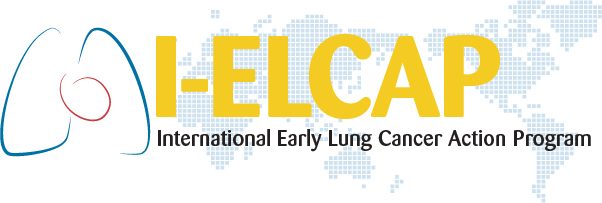Previous Meetings
The 5th International Conference on Screening for Lung Cancer
Friday, October 26, 2001 to Sunday, October 28, 2001
Weill Medical College of Cornell University
New York, NY
United States
Agenda: 5th Conference Agenda
Mission:
The broadest mission of these Conferences is the collective pursuit of avant-garde understanding of the issues surrounding screening for lung cancer, the broadest subissues being early diagnosis and early intervention. Any given Conference focuses on issues that are particularly topical at the time. This time, two fresh developments lead to the principal missions for the Conference. For one, the I-ELCAP protocol for early diagnosis has been available for scrutiny and pilot application; and the corresponding mission is to pursue consensus on this protocol or on amendments to it. For another, fresh evidence strongly indicates that the sub-solid (part-solid and non-solid) nodules that present as ‘ground-glass opacities’ in CT images are more commonly malignant than solid ones; and this prompts the mission of pursuing consensus on priorities in the development of practice-relevant characterization of sub-solid nodules as to both imaging and pathology, and issues of intervention need to be re-examined as well.
Consensus Statement:
As a culmination of the previous International Conferences, and in light of the continuing spreading of CT screening, the Third International Conference last year had called for the formation of an international consortium. Pursuant to this, the International Early Lung Cancer Action Program (I-ELCAP) had been formed and a common I-ELCAP protocol for the collaborative effort rapidly to accumulate information for research and screening practice had been developed. The protocol was presented and accepted at the Fourth International Conference. Subsequent to the Third Conference, the ELCAP Expert Pathology Panel reviewed the I-ELCAP cytology and pathology protocols and the associated data forms, and tested these by application to diagnosed cases in the ELCAP database. These protocols have been adopted by the NY-ELCAP, a consortium of 11 institutions in New York State currently screening 10,000 high-risk subjects. An Advisory Board for the I-ELCAP consortium had also been formed and has had three meetings to date. Part of the Board’s concerns is to ensure inclusive and productive collaborations among interested organizations. Accordingly, EU/US collaboration among the European countries and the American College of Radiology Imaging Network (ACRIN) planning randomized controlled trials (RCTs), initiated in July 2001, had two of its workshops at the Fifth Conference.
At this most recent Fifth Conference, participants in the I-ELCAP consortium presented their perspectives on the I-ELCAP protocol from the vantage of their particular specialties and experiences with the protocol. Radiologic, pulmonologic, biomarker, cytologic, histologic, behavioral, and quality assurance perspectives were presented, and discussion centered on proposed modifications, which were further discussed in one of the workshops. Beyond the protocol, the Fifth Conference focused on radiologic findings peculiar to CT screening, now called ‘sub-solid’ (‘part-solid’ or ‘non-solid’) nodules (previously called ‘ground-glass opacities’). Apart from the new terminology, addressed were the frequency of diagnosed malignancy and possible interventions. The need for further research on these findings, including intervention RCTs, was stressed.
The recommendations arising from the three workshops were adopted. The resulting changes in the I-ELCAP protocol were aimed at reducing the number of diagnostic scans and their radiation dose. Thus, low-dose imaging was recommended for all diagnostic scans, except for the high-resolution images targeting the thus identified nodules; no interim follow-up was recommended for those with only nodules of 3 mm in diameter or smaller; and for those with single-slice CT scanners, it was recommended to use two breathholds, thus obtaining 5 mm sections on the initial screening CT without an immediate diagnostic CT for those with a positive result. Another workshop recommended the development of a registry with retrospective and prospective enrollments of instances of first detection of sub-solid nodule on CT. Documentation would include imaging and pathologic findings on each nodule as well as the person’s risk indicator profile and subsequent interventions — with interest in unresected cases in particular. The outcome of principal interest is evidence of the presence/absence of genuine cancer. It also recommended that a committee be formed of thoracic surgeons and pulmonologists to define types of situation in which the advisability of resection is equivocal (equipoise). This committee also is to define the intervention options to be evaluated in an RCT. The remaining workshop, focusing on psychological and behavioral issues surrounding lung-cancer screening, recommended ongoing assessment of key psychologic and behavioral aspects of subjects’ informed decision-making and promoting positive patient-centered outcomes such as smoking cessation and attenuation of cancer worry so as to enhance recruitment and retention of high-risk individuals in lung cancer screening programs and to provide appropriate education and support services.
